6 Must-Have Features in Construction Equipment Dealer Software (And What to Avoid)

Not all construction equipment dealer software is created equal—especially in construction. Many DMS platforms are outdated, bloated, or built for industries that don’t reflect how modern equipment dealerships operate.
If you're comparing dealer management systems, chances are you’re feeling the pain: disconnected rental systems, CRM workarounds, and slow, clunky interfaces that hold your team back.
Here are six features to prioritize when evaluating the best construction dealer management software for your business.
1. Cloud-Native Design (Not Just Hosted)
True cloud software is built for secure, real-time access. A cloud-native DMS gives your team the ability to:
- Access your DMS from anywhere—no VPNs or remote desktops required
- Stay up to date automatically, with no downtime
- Use any device to quote, track, and manage operations in real time
This level of flexibility is especially important for teams quoting deals in the field or managing inventory across multiple locations.
2. Built-In CRM and Communication Tools
Managing customer relationships requires more than a contact database. A modern DMS should include tools that help your team take action.
Look for a system with integrated features like:
- Lead tracking and sales pipeline management
- Built-in quoting tools to see & quote real-time parts and inventory
- Text messaging with full communication history
- Assign tasks and activities for follow-up
- Lead and activity tracking
- All interaction ties back to a single customer record in DMS
These capabilities help sales reps follow up faster, communicate clearly, and manage deals without jumping between systems.
3. Rental and Service Features Designed for Equipment
Rental and service workflows are unique to equipment dealerships. Your DMS should support both without requiring separate platforms.
Look for rental features like:
- Real-time equipment availability
- Rental agreement generation and billing
- Utilization tracking
Service capabilities should include:
- Work order creation and job costing
- Technician scheduling
- Service history tied to individual units
Trying to manage these workflows manually or with disconnected tools leads to delays and missed revenue opportunities.
4. Real-Time, Unit-Level Inventory Management
Inventory is at the center of your dealership’s operations. The right DMS gives you visibility into every unit, across every location.
Key inventory features should include:
- Tracking by brand, model, serial number, and condition
- Movement tracking across stores and warehouses
- Real-time availability and status updates
- Intelligent ordering recommendations based on seasonality and pre-set limits
With clear visibility, your team can quote confidently, move inventory faster, and plan purchases more strategically.
5. Dealer-Focused User Experience
If your team avoids using your current system, it may be time for a change. Legacy DMS platforms often have outdated interfaces that require extra training and extra patience. A modern DMS should offer:
- A clean, intuitive interface
- Streamlined workflows that match your day-to-day operations
- Easy onboarding for new employees
The right system should feel like a helpful tool, not a burden your team has to work around.
6. Built by Dealers and Actively Supported
The most effective construction equipment dealer software isn’t built by outsiders—it’s built by dealers. Look for a DMS created by people who understand the real-world challenges of selling, renting, and servicing construction equipment.
Ask key questions:
- Was this platform purpose-built for construction and construction equipment dealers?
- Does the vendor offer ongoing updates and innovation?
- Is support handled by a team that knows the dealer business inside and out?
A team that’s walked in your shoes will be far better equipped to help you succeed.
Frequently Asked Questions
Cloud‑native platforms are engineered for the web from day one. They run in modern, globally distributed data centers and update automatically—so your team can log in from any device without VPNs, remote desktops, or downtime. Hosted systems are legacy desktop apps moved to a server; you still wrestle with rigid update cycles and remote‑access work‑arounds.
An integrated CRM lets sales reps track leads, quote deals from live inventory, text customers, and see complete communication history without jumping between tools. The result is faster follow‑up, clearer visibility into the pipeline, and fewer data silos.
Real‑time availability, utilization tracking, and automated rental billing prevent double‑booking, improve fleet ROI, and eliminate manual spreadsheets. Purpose‑built rental workflows ensure that quoting, servicing, and invoicing flow seamlessly.
Unit‑level tracking follows every machine by brand, model, serial number, and condition across all locations. With instant availability and movement history, you can quote confidently, forecast purchases, and avoid costly stock‑outs or overstock.
A clean, intuitive interface reduces training time, speeds up common tasks, and lowers the risk of errors. Legacy DMS platforms often frustrate users, leading to work‑arounds in spreadsheets and lost productivity.
Vendors who’ve walked in your shoes understand construction‑specific rental cycles, service workflows, and parts logistics. They ship features that solve real problems—and their support teams speak your language.
Look for fees tied to on‑premise servers, VPN maintenance, forced hardware upgrades, custom report development, fees for pricing file updates, and manual financial consolidation. Most importantly investigate cost for third party tools such as CRM, Rental, Communication, and Data Warehousing. Cloud‑native, best‑of‑breed stacks often cost the same—or less—while slashing these hidden expenses.
Warning signs include disconnected rental or CRM tools, poor support,, sluggish remote access, recent outages due to security or performance events and staff avoiding the system. If your dealership has hit $75 M+ revenue or expanded past two locations, the efficiency gains from switching usually outweigh the transition cost.
Final Thought
The best construction dealer management software isn’t the one packed with the most features—it’s the one with the features that matter. Cloud-native. Rental-ready. Easy to use. Purpose-built for how equipment dealerships actually operate.





